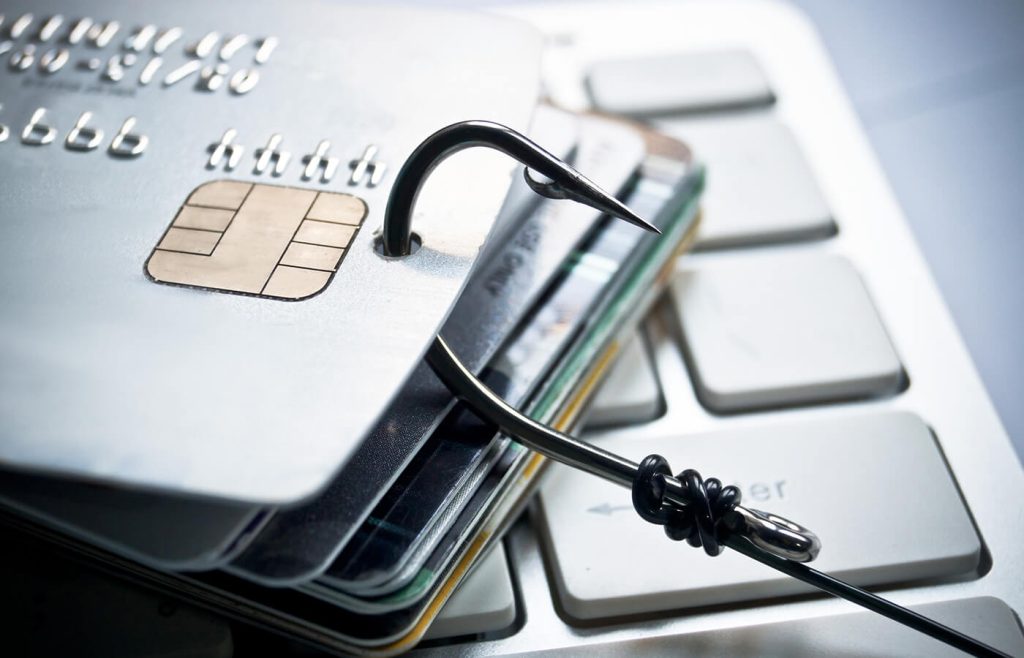How Credit Card Hacking Works – Updated Beginners Guide
In today’s digital age, credit cards have become an essential part of our lives. They offer convenience and flexibility when making purchases, whether it’s online or at a physical store. However, with the rise of technology, the risk of credit card hacking has also increased. Understanding how credit card hacking works is crucial for individuals and businesses to protect themselves from potential fraud and unauthorized transactions. This comprehensive guide will delve into the intricate workings of credit card hacking, shedding light on the methods employed by hackers and offering insights on how to stay safe in an increasingly interconnected world.
“Back in the beginning, they got the imprint of credit cards from the carbon copies they dug out of the trash,” says William Noonan, assistant special agent in charge of the Secret Service’s criminal investigative division. “Technology has changed things.”
The number of compromised records has been on the decline in the last two years, according to the Secret Service, after reaching a record high of 361 million records in 2008. The trend might reverse this year, however, after a recent string of mishaps.
This spring criminals hacked, phished, or skimmed their way into the systems of Michaels Stores, Sony, marketing firm Epsilon, Citibank, and even security expert RSA, among others. In some cases, they only obtained names and emails. In the worst cases, they got credit card numbers.
How Credit Card Hacking Works: An In-Depth Analysis
Credit card hacking involves various techniques used by cybercriminals to gain unauthorized access to credit card information. In this section, we will explore the most common methods employed by hackers to compromise credit card data and exploit vulnerabilities in the system.
1. Phishing Attacks: Luring Users into Sharing Sensitive Information
Phishing attacks are a prevalent method used by hackers to trick individuals into divulging their credit card details. They typically involve the creation of deceptive emails or websites that mimic legitimate sources, such as banks or online retailers. The goal is to persuade unsuspecting victims to provide their credit card numbers, expiration dates, CVV codes, and other personal information.
To execute a successful phishing attack, hackers employ social engineering techniques, often utilizing fear or urgency to prompt immediate action from the victim. For example, an email might claim that the recipient’s credit card has been compromised and require immediate verification by clicking on a provided link. Once the user enters their information on the fake website. The hacker gains access to their credit card details, which can then be used for fraudulent purposes.
2. Skimming Devices: Capturing Card Data at Point-of-Sale
Skimming devices are physical devices or modifications installed on legitimate point-of-sale (POS) terminals or ATMs. These devices are designed to clandestinely capture credit card information when customers make transactions. Skimmers can be installed either externally, as overlays on card readers, or internally, by tampering with the original hardware.
When a card is swiped or inserted into a compromised terminal, the skimmer captures the card’s magnetic stripe or chip data. This stolen information is then either stored on the device for later retrieval by the hacker or transmitted wirelessly to their remote location. With the acquired credit card details, hackers can create counterfeit cards or make unauthorized online purchases.
3. Data Breaches: Exploiting Vulnerabilities in Systems
Data breaches occur when hackers gain unauthorized access to a company’s database containing sensitive customer information, including credit card details. These breaches often target large organizations with extensive customer bases, such as financial institutions, e-commerce platforms, or social media networks.
Hackers exploit vulnerabilities in the targeted system’s security infrastructure, such as weak passwords, unpatched software, or social engineering techniques. Once inside, they can extract a vast amount of credit card information, which is then sold on the dark web to other cybercriminals or used for fraudulent purposes.
4. Malware and Keyloggers: Covertly Stealing Information
Malware and keyloggers are malicious software programs designed to infiltrate a user’s device. And capture sensitive information, including credit card data. These programs are usually distributed through infected email attachments, deceptive downloads, or compromised websites.
Once installed on a victim’s device, malware and keyloggers operate covertly, recording keystrokes, capturing screenshots, or monitoring internet activity. When a user enters their credit card information on a compromised website or during an online transaction, the malware collects the data and sends it to the hacker’s command-and-control server. The stolen credit card details can then be used for fraudulent activities.
5. Brute Force Attacks: Cracking Weak Passwords
Brute force attacks involve systematically attempting different combinations of usernames and passwords until the correct one is found. This method is often used to gain access to online accounts where credit card information is stored. Such as e-commerce platforms or online banking systems.
Hackers utilize specialized software that automates the process of guessing passwords, exploiting weak or commonly used combinations. These attacks can be time-consuming but can yield significant results if successful. Once the hacker gains access to the account, they can obtain the stored credit card information and carry out unauthorized transactions.
FAQs About Credit Card Hacking
1. What motivates hackers to engage in credit card hacking?
Hackers are primarily motivated by financial gain when it comes to credit card hacking. They aim to obtain valuable credit card data, which can be sold on the dark web or used to make fraudulent purchases. Additionally, hackers may also seek personal information to engage in identity theft or other malicious activities.
2. How can individuals protect themselves from credit card hacking?
There are several measures individuals can take to protect themselves from credit card hacking:
- Regularly monitor credit card statements for any unauthorized transactions.
- Enable two-factor authentication for online accounts whenever possible.
- Use strong, unique passwords for different online platforms.
- Be cautious of suspicious emails or messages asking for personal information.
- Regularly update devices and software to ensure the latest security patches are in place.
3. How do companies mitigate the risk of credit card hacking?
Companies can implement several security measures to mitigate the risk of credit card hacking:
- Employ robust data encryption techniques to protect customer information.
- Regularly conduct vulnerability assessments and penetration testing to identify and address weaknesses.
- Implement strict access controls and authentication protocols for employees handling sensitive data.
- Train employees on cybersecurity best practices and the identification of phishing attempts.
- Stay updated with the latest security trends and comply with industry standards and regulations.
4. Are EMV chip cards more secure against credit card hacking?
EMV chip cards, also known as smart cards, provide an added layer of security compared to traditional magnetic stripe cards. The embedded microchip in EMV cards generates a unique code for each transaction, making it difficult for hackers to create counterfeit cards. While they offer increased security, EMV chip cards are not entirely immune to hacking, and other methods, such as skimming or data breaches, can still compromise cardholder information.
Henceforth, WE WISH TO ANNOUNCE THAT OUR SERVICES ARE NOT AVAILABLE TO PEOPLE FROM NIGERIA AND INDIA. THESE ARE USELESS TIME WASTERS AND THIEVES TRYING TO BEG OR SCAM US OF OUR PRODUCTS. OUR SERVICES ARE NOT FREE AND PAYMENT IS UPFRONT
A LOT OF FOOLS FROM NIGERIA AND INDIA. on the off chance that YOU DON’T TRUST TO USE OUR SERVICES, DON’T CONTACT US AS WE HAVE NO FREE SERVICE
CONTACT US FOR PURCHASE/INQUIRIES, WE RESPOND ALMOST INSTANTLY
HI BUYERS, WE ARE A PROFESSIONAL CARDING AND HACKING TEAM. HOVATOOLS HAS BEEN AROUND SINCE THE TIME OF EVO MARKET, ALPHABAY, WALLSTREET MARKET AND MORE. WE REMAIN STRONG AND RELIABLE IN THE INDUSTRY, ALWAYS PROVIDING YOU WITH THE BEST QUALITY TOOLS TO HELP YOU MAKE MONEY AND MAXIMIZE PROFIT IN THE FRAUD GAME.
TO GET STARTED, YOU CAN VISIT OUR ONLINE SHOP/STORE TO BUY EVERYTHING YOU NEED TO START CASHING OUT. AT THE SHOP YOU GET Accounts & Bank Drops CVV & CARDS DUMPS PERSONAL INFORMATION & SCAN.
BANK HACKING SOFTWARE – WIRE/ACH DARKWEB MONEY TRANSFER HACKERS
Buy Fresh Credit Cards for Carding, BIN LIST Buy Bank Login, RDP, Buy Hacked Paypal accounts. Contact us to buy all tools and carding software. CLICK HERE TO VISIT OUR SHOP
Buy Socks 5, Email Leads, Buy Latest CC to Bitcoin Cashout Guide, Buy Hacked Zelle transfer , Western Union Money Transfer Hack, Buy Hacked Money Transfer service to your bank account.
Enroll for Paid private Carding Class.







